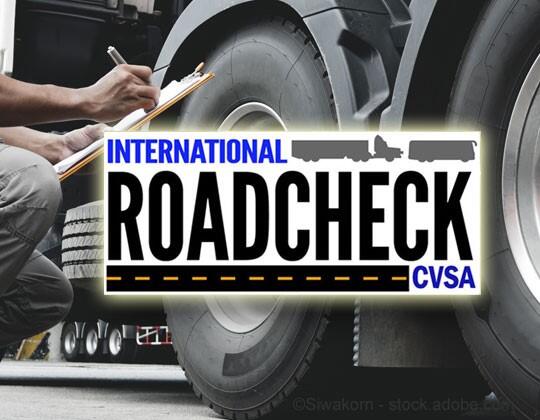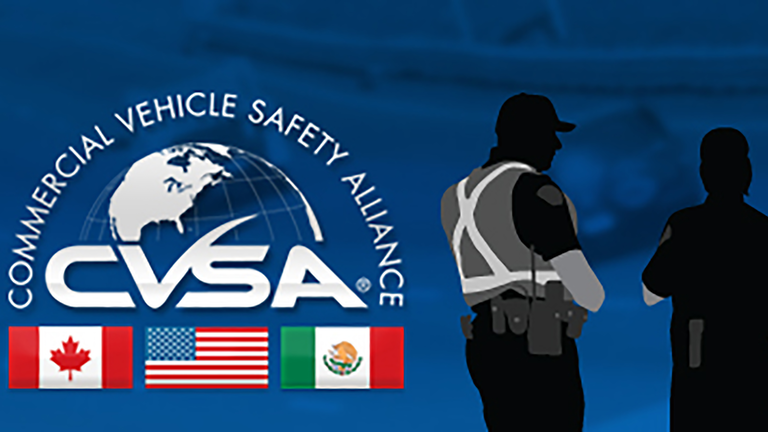International Roadcheck Set for May 17th-19th with Emphasis on Wheel Ends
The Commercial Vehicle Safety Alliance has announced this year’s International Roadcheck dates as May 17-19 with a focus on wheel ends.
Roadcheck is a 72-hour high-visibility, high-volume commercial motor vehicle inspection, and enforcement initiative. Commercial motor vehicle inspectors in Canada, Mexico, and the U.S. will conduct North American Standard Inspections of commercial motor vehicles and drivers at weighing and inspection stations, on roving patrols, and at temporary inspection sites.
Each year, CVSA focuses on a specific aspect of a roadside inspection. This year, the focus will be on wheel ends. Wheel end components support the heavy loads carried by commercial motor vehicles, maintain stability and control, and are critical for braking. Violations involving wheel-end components historically account for about one-quarter of the vehicle out-of-service violations discovered during Roadcheck, and past Roadcheck data routinely identified wheel-end components as a top 10 vehicle violation.
So, you don’t think your drivers will be inspected this year!
Here are the numbers from the 2021 Roadcheck:
| Country | # Of Level I Inspections | # Of OOS Vehicles | % Of OOS Vehicles | # Of OOS Drivers | % Of OOS Drivers |
|---|---|---|---|---|---|
| U.S. | 19,786 | 4,136 | 20.9% | 1,083 | 5.5% |
| Canada | 3,349 | 912 | 27.2% | 117 |
3.5% |
Learn more about International Roadcheck
Commercial Vehicle Safety Alliance (CVSA) Driver Tip Sheet
CVSA published this tip sheet for carriers and drivers in preparation for this year’s Roadcheck that you can print off as a handout for your drivers: Roadcheck handout
Question of the Week:
My driver has gone through a roadside inspection, how long do I have to keep this documentation on file?
Answer: Copies of all roadside inspections are to be kept by the motor carrier for 12 months. The driver is required to turn in the inspection to the motor carrier within 24 hours. If they are not going to return to the terminal they are to mail in the inspection. If the inspection resulted in violations they are to be corrected or repaired and the inspection form is to be signed and certified that the repairs were completed and sent back to the state of inspection within 15 days.
Best Practice Guidelines for Roadside Inspections:
- Train drivers on how to complete good quality pre-trip inspections to reduce the possibility of violations.
Use Idealease Pre-Post Trip training videos:
English version:
Tractor Trailer
Straight Truck
Spanish version:
Tractor Trailer
Straight Truck
- Review your FMCSA data monthly at https://safer.fmcsa.dot.gov/CompanySnapshot.aspx and enter your DOT number or name.
- After reviewing the snapshot report click on the SMS (CSA) link in the blue box in the upper right-hand corner.
- Review the vehicle and driver basics with the associated inspections and cross-reference the inspections you have on file with the inspections turned in by your drivers. Question those drivers who did not submit inspection reports.
- Review the “Carrier History” tab in the Tools/Resource section on your home page to determine if the number of inspections you are having is on the rise or decline.
- Review vehicle inspections and violations with your maintenance provider to reduce violations.
- Maintain copies, along with any repair orders attached if there were violations, in the tractor and trailer files.
- Use the roadside inspection information, such as date, time, and locations to cross-reference with the drivers' hours of service documentation for falsification violations
- Train drivers on how to successfully pass a roadside inspection and how to conduct themselves.
- Keep your vehicles clean and well maintained so as not to be targeted for inspection.
- Advise drivers that moving violations will generate inspections.
- Consider providing an incentive to drivers who successfully pass an inspection.
CVSA’s New North American Inspection Standard Takes Effect April 1st
The Commercial Vehicle Safety Alliance’s 2022 North American Standard Out-of-Service Criteria took effect on Friday, April 1. The 2022 version replaces and supersedes all previous versions.
The North American Standard Out-of-Service Criteria as the pass-fail criteria for inspections. The purpose of the criteria is to identify critical violations. Those violations render the driver, vehicle, and/or cargo out of service until the condition(s) or defect(s) can be corrected or fixed. The Out-of-Service Criteria identify critical vehicle inspection items and detail the criteria that can prohibit a motor carrier or driver from operating a commercial motor vehicle for a specified period or until the condition is corrected.
The 2022 North American Standard Out-of-Service Criteria are available in three formats:
- A spiral-bound, hard-copy handbook.
- An electronic handbook, in PDF format, best viewed on a desktop, with a restricted three device and/or web browser limit
- A mobile app, which also contains inspection bulletins, inspection procedures, operational policies, inspection and educational videos, brochures, real-life photo examples of vehicle, cargo securement, and hazardous materials/dangerous goods violations, and access to the CVSA Learning portal for online training, and much more. To download the app, search “CVSA Out-of-Service Criteria” in the App Store or Google Play.











